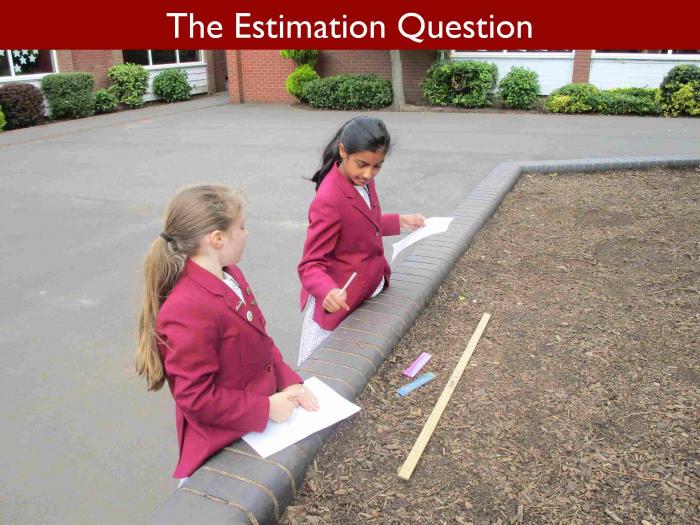
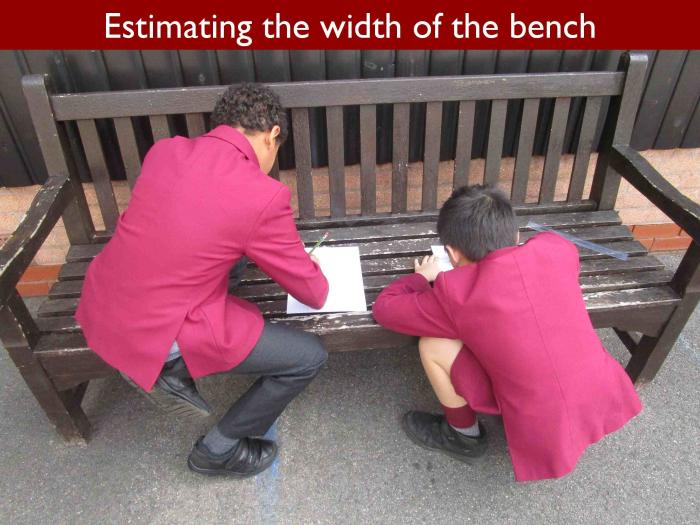
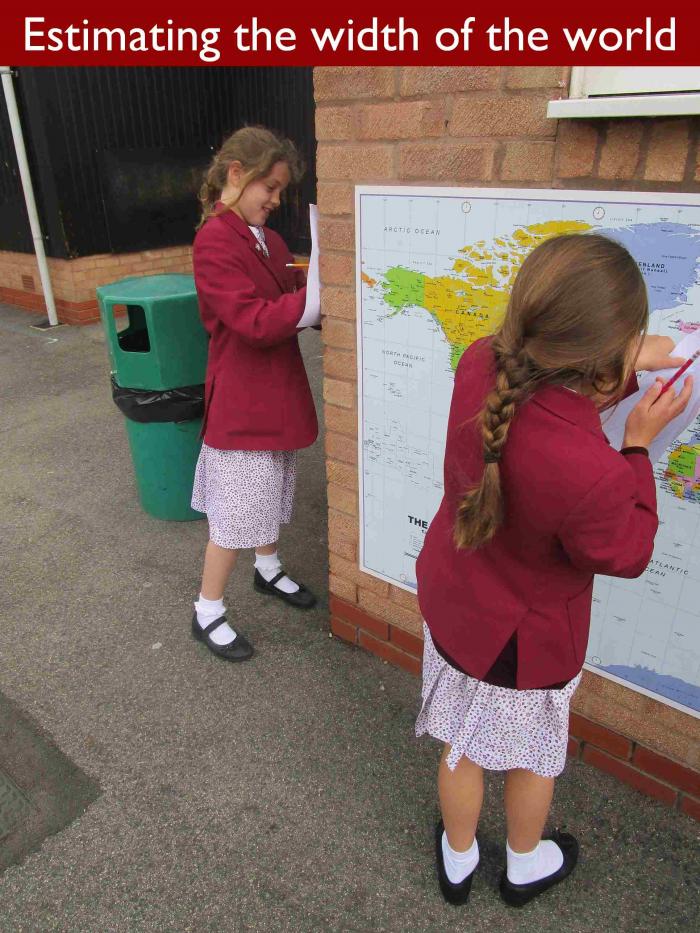
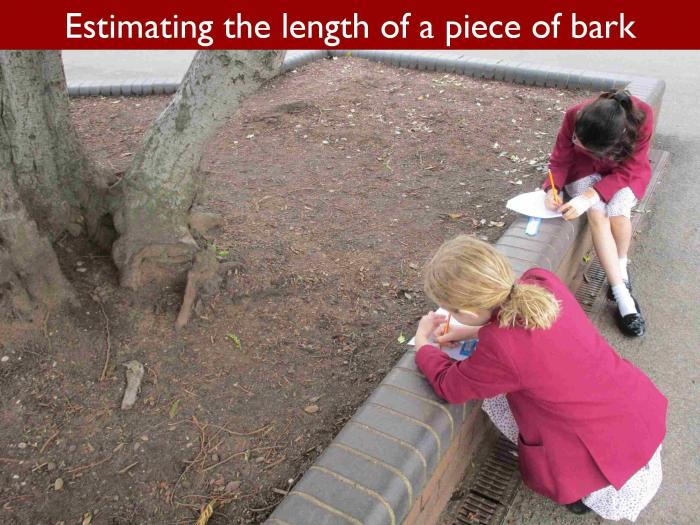
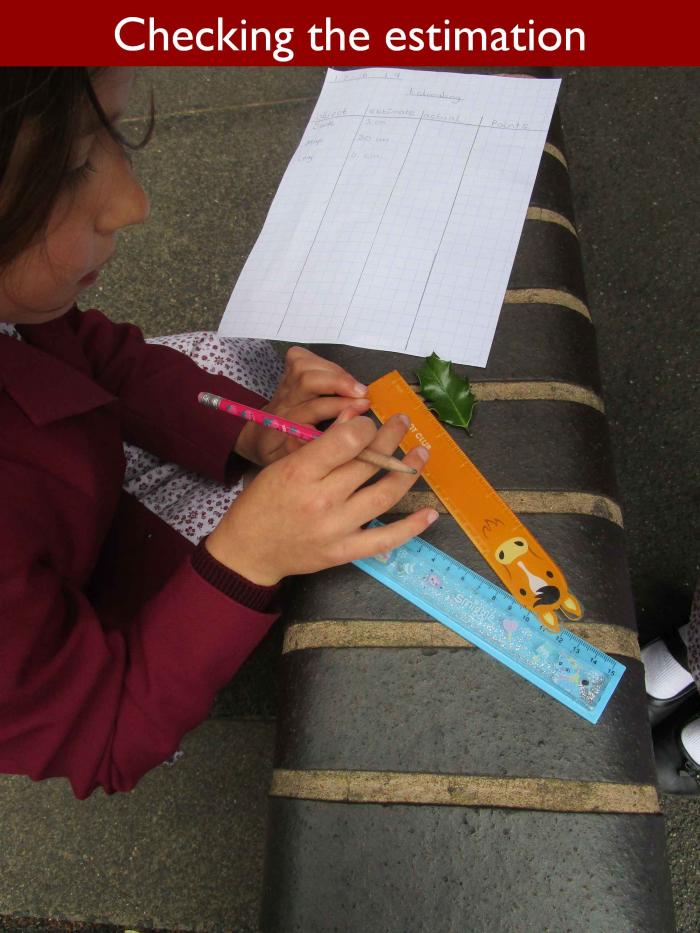
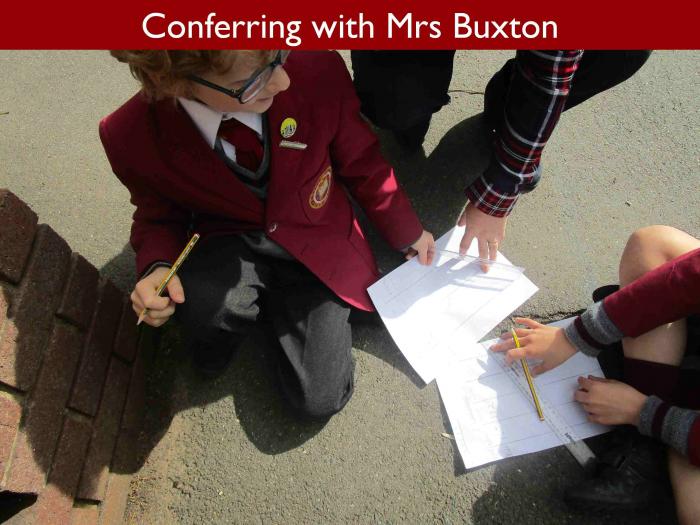
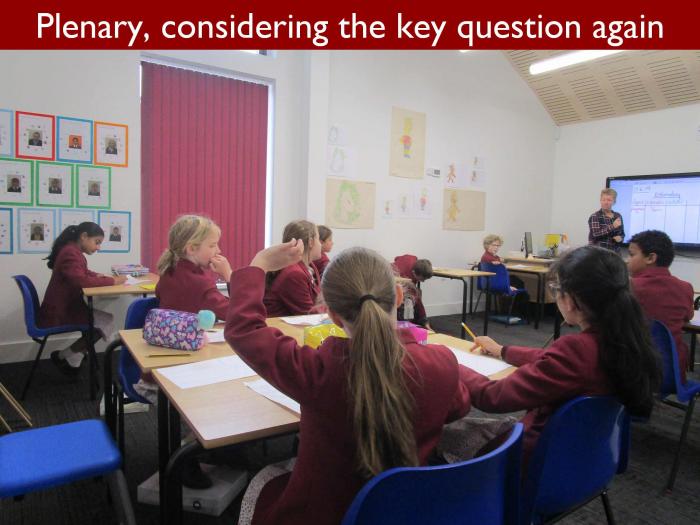
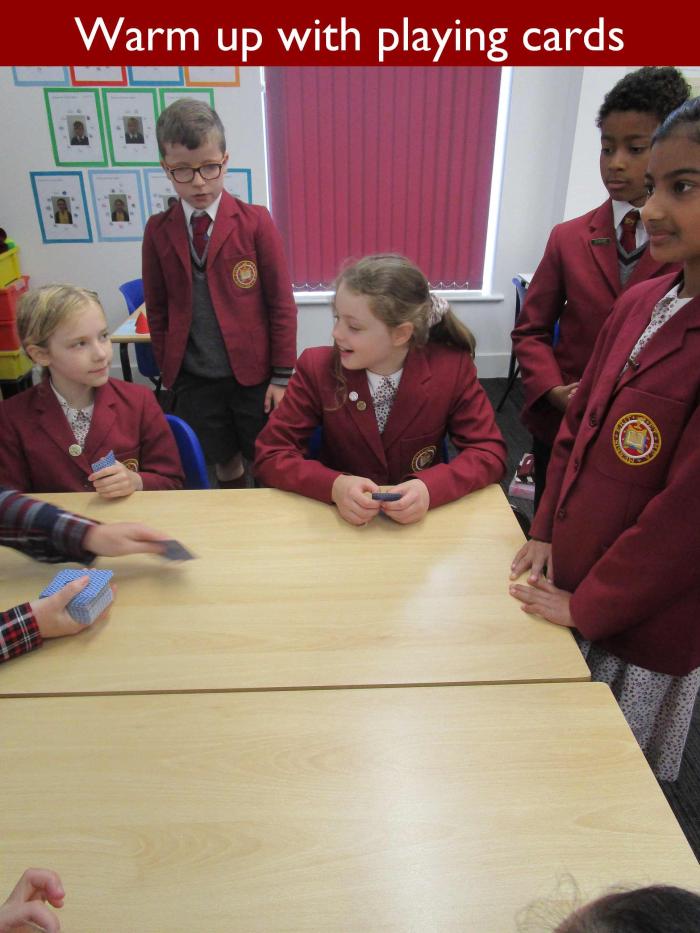
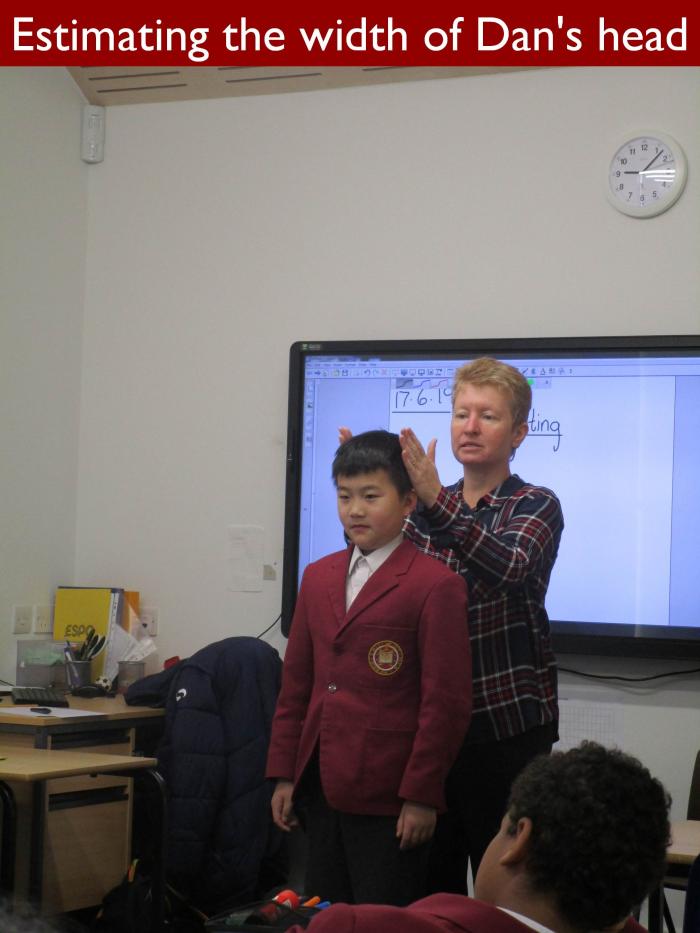
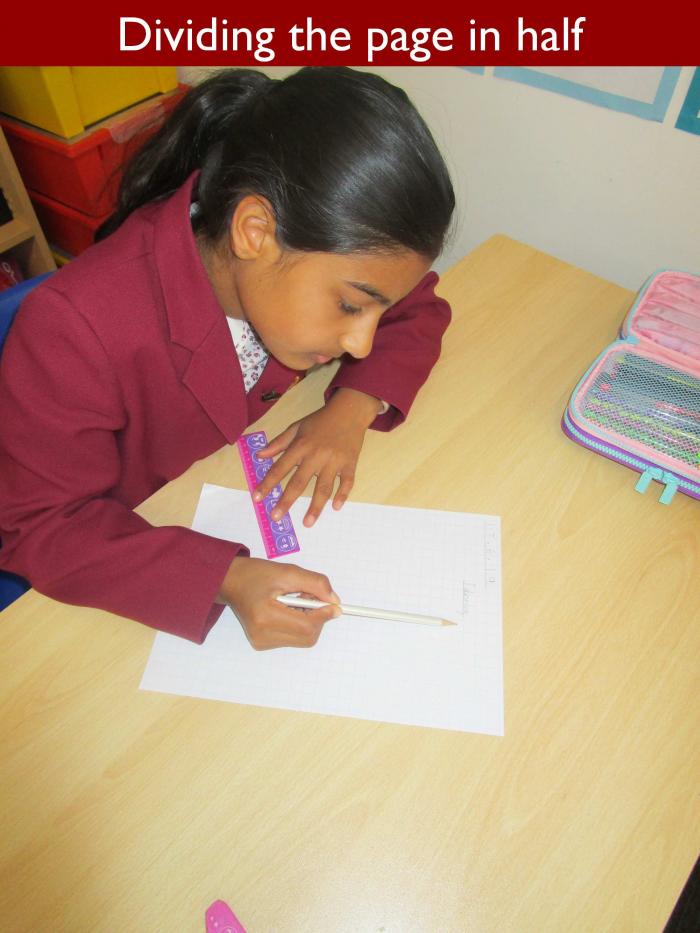
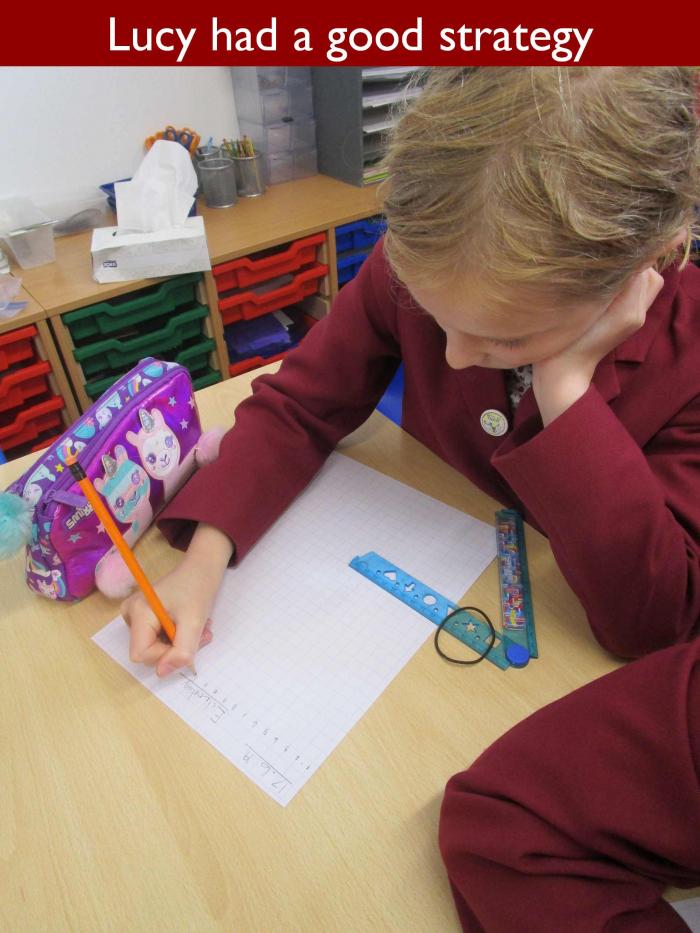
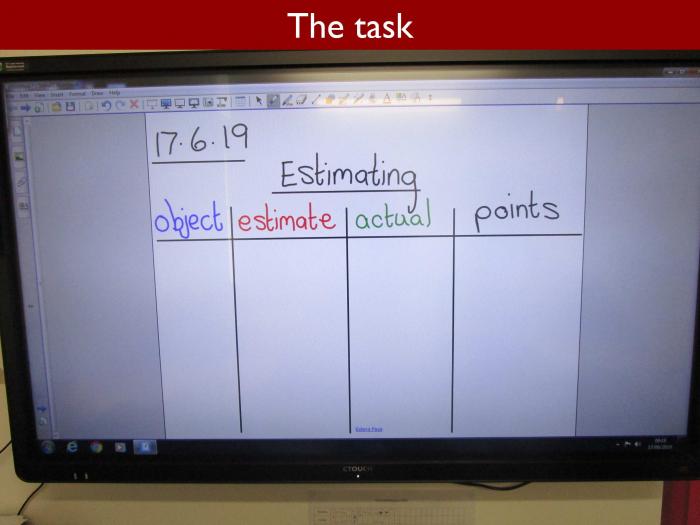
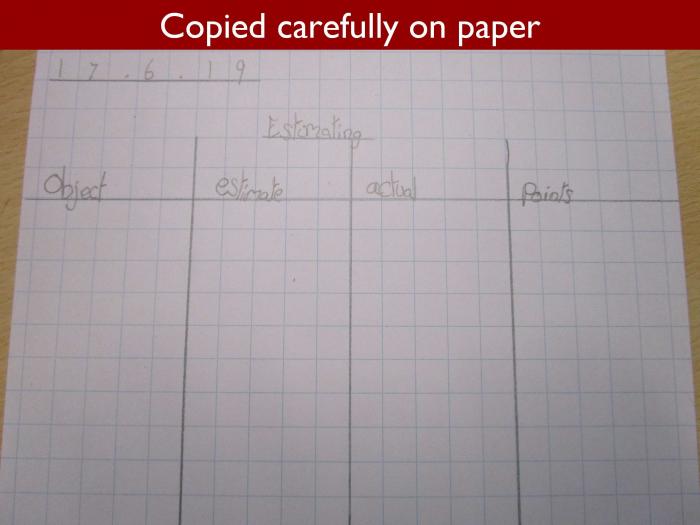
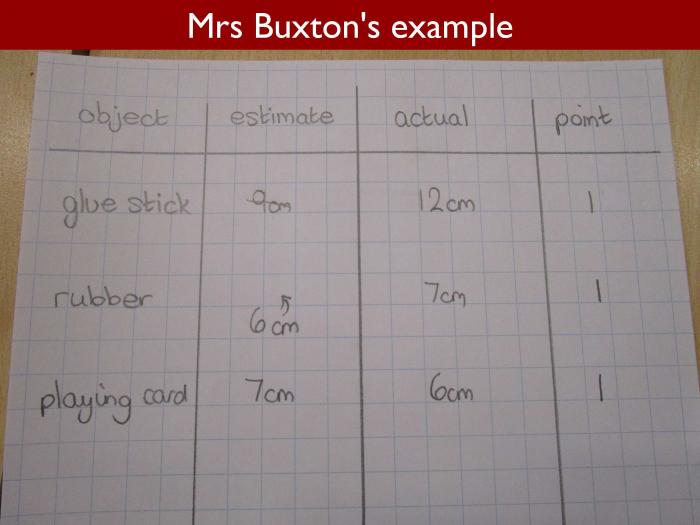
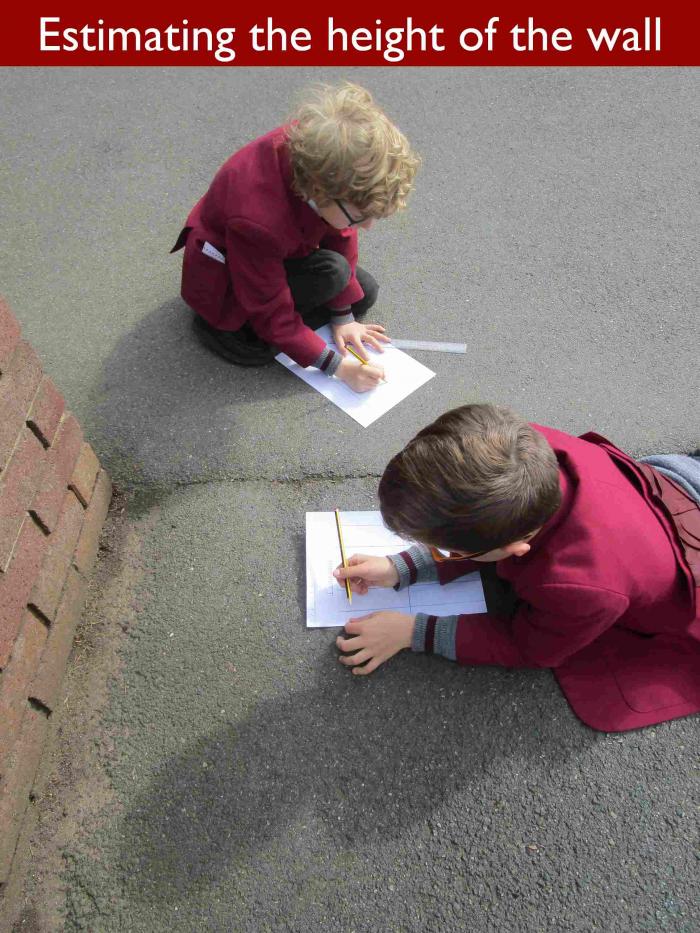
The Estimation Question
I am sure that, just like me, you are all far too young to remember a song recorded in the early 1980s by Bananarama and the Fun Boy Three entitled It Ain’t What You Do, It’s The Way That You Do It. Yet, when I had the chance to watch Mrs Buxton’s maths lesson with Form 4 the other day on estimation, this was the song that started going round and round in my head. Mrs Buxton wasn’t singing, of course. What she wanted the children to do was to give the most sensible estimate possible by focusing carefully on what they already know.
The lesson started with a warm up using a set of playing cards. Last week, Mrs Buxton noticed that the children were finding it hard to remember those all important number prefixes, such as uni, bi and tri. Doling out playing cards at a table with the children grouped around her, Mrs Buxton was looking for instant recall and, once people got into their stride, she began to get it. These little words are so crucial. Knowing dec, for instance, leads you not only to decagon, but also to decimal and decade; another small but vital tool designed to make links within children’s understanding of mathematics.
Even at the end of this little task, Mrs Buxton squeezed in another bonus morsel of learning.
“How many cards do you have?” she wanted to know.
“Three,” came the reply from one of the children.
“What’s half of three?” Mmm…tricky, and Mrs Buxton wanted the answer to be given as both a fraction and a decimal. The key thing is never to let these key pieces of knowledge slip too far from the forefront of children’s minds.
When Mrs Buxton introduced estimation as the main focus of the lesson, she made it very clear that what she was most interested in was the way in which the children arrived at their answers, rather than the answers themselves. Previously, they have been doing some work on measurement, primarily length, as well as converting between millimetres, centimetres and metres. They have already touched on the concept of estimation.
An estimate, Mrs Buxton was at pains to emphasise, is not a guess, but nor is it quite a prediction. To make a good estimate, you have to draw on what you know in order to come up with something both sensible and possible. When Dan stepped forward to have the width of his head estimated, Grace immediately recalled that Freddie’s head was 21cm when it was measured last week. An ideal starting point. Everyone, Mrs Buxton included, felt sure that Dan’s head would be wider. After all, he is considerably taller than Freddie. Thus Eva’s estimate of 25cm seemed reasonable, as did Aiyana’s of 28cm. However, when Mrs Buxton got the ruler out, it transpired that Dan’s head is also 21cm wide, proving that even teachers can be caught out sometimes.
Having worked on estimation with younger pupils, I have found that children are frequently anxious when their estimate turns out to be incorrect. A few will usually try to make sneaky changes to what they have written. What we as teachers need to get across, however, is that it is not a wrong answer. Maybe it wasn’t the most successful estimate but, if the pupil can learn from it, then the exercise was worthwhile. In her lesson, Mrs Buxton constantly emphasised the importance of using what you know. A piece of A4 paper is roughly 30cm long, a mini ruler is 15cm. Mrs Buxton knows that her handspan is 20cm, and all these snippets of information are invaluable tools when estimating.
You won’t be at all surprised to hear that Mrs Buxton likes active lessons, so she was keen to get the children outside estimating in the playground, especially as for once it wasn’t raining. Firstly, the pupils had to set up their page, dividing it first in half and then into quarters by counting the squares. Working with a partner, the children were then instructed to find objects in the playground, fixed or mobile, to estimate and then measure. The estimates were to be made individually, but the partners could work together to measure and to verify their results. This was not a long exercise. It didn’t need to be as only three measurements were required. Just enough time to reinforce Mrs Buxton’s point that you should use what you already know to make the best estimate.
Returning to the classroom, Mrs Buxton asked her question again, pointing to the last column on the children’s chart. What did you use to make your estimate? This would tell her how far the children had grasped what she wanted them to learn. Grace was very pleased that her estimate of the length of the playground proved to be accurate to the nearest metre. This was because she used her previous experience of measuring its width. Lucy, estimating a piece of a plant, related its length to that of the ruler in her pencil case. Eva realised that the holly leaf was similar in length to her thumb, a measurement which she already knew to be 5cm. This was exactly what Mrs Buxton wanted to hear. She left the children with an important and encouraging thought. The best mathematicians, she told them, make things easy for themselves, and that is how they succeed. Very sound advice, as far as I’m concerned.